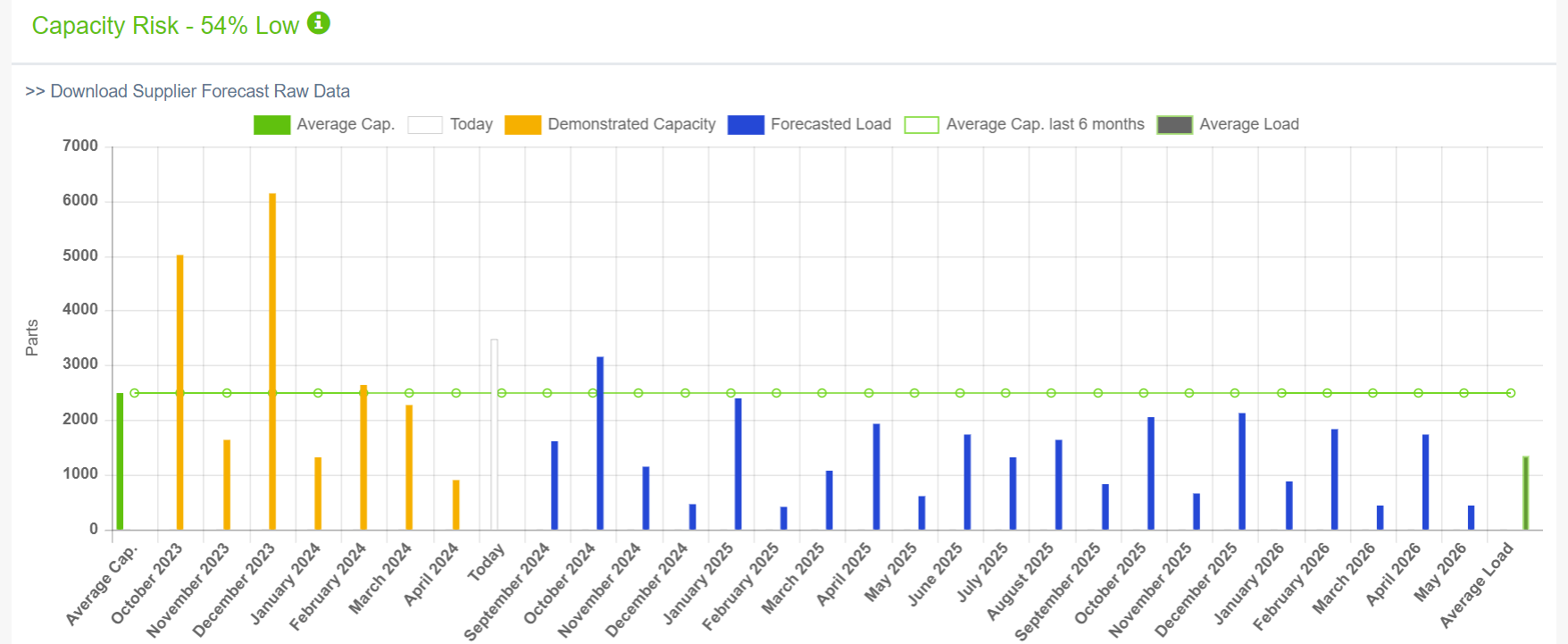Blogs
- Home
- »
- Blogs
Supplier Capacity Monitoring
24 May 2024
Supplier capacity monitoring can help identify potential bottlenecks or disruptions in the production process before they occur, allowing for proactive measures by the supply chain team to be taken to mitigate any negative impact on operations. Understanding supplier capacity also enables companies to align production schedules with demand forecasts more effectively. This ensures that products are available when needed, avoiding stockouts or excess inventory situations.
One excellent tool to monitor supplier capacity on a bi-weekly/monthlyis by using big data analytics to create a “Supplier Rough Capacity Analysis”. Supplier rough capacity analysis involves assessing the capacity of suppliers to meet production demands based on forecast Demand on the one hand and past shipments made by the supplier:

1. Forecast Demand: Sum the total future demand quantity due in future months 3-18 for all products or components supplied by the supplier. The Expected load is the total forecast due/18 (Period reviewed) 2. Historical Shipments: Sum the total quantity shipped in the last 6 months for all products or components supplied by the supplier. The Average Capacity is the Total parts shipped/6 (Period reviewed) 3. Rough measure capacity risk score: The supplier score is determined by Expected load / Average Capacity: <=100% = low risk – Forecast demand quantity is smaller than the historical shipment quantity and no capacity risk is associated with the supplier. 100% to 120% = medium risk - Forecast demand quantity is slightly higher than the historical shipment quantity and no major capacity risk is associated with the supplier. 120%+ = High risk - Forecast demand quantity is higher than the historical shipment quantity and high risk is associated with the supplier capacity and the capability to ship on time. In such a case, some immediate steps need to be taken with the supplier:
1. Collect Data such as production capacity to Obtain data on the supplier's maximum production output and current utilization to better understand how much of their current capacity is already being used to fulfill other orders. 2. Evaluate Infrastructure and Resources like Facilities and Equipment, Labor Force Inspect and supply chain to review the supplier’s own supply chain for raw materials and components. 3. Assess Financial Health to determine if a supplier can support investment in additional resources. 4. Review Performance History 5. Conduct recurring On-Site Visits to monitor progress or new bottlenecks
In conclusion, by monitoring the supplier rough capacity score, organizations can identify suppliers that may be struggling to meet their commitments. This early warning system allows companies to diversify their supplier base or develop contingency plans to mitigate the risk of supply chain disruptions.